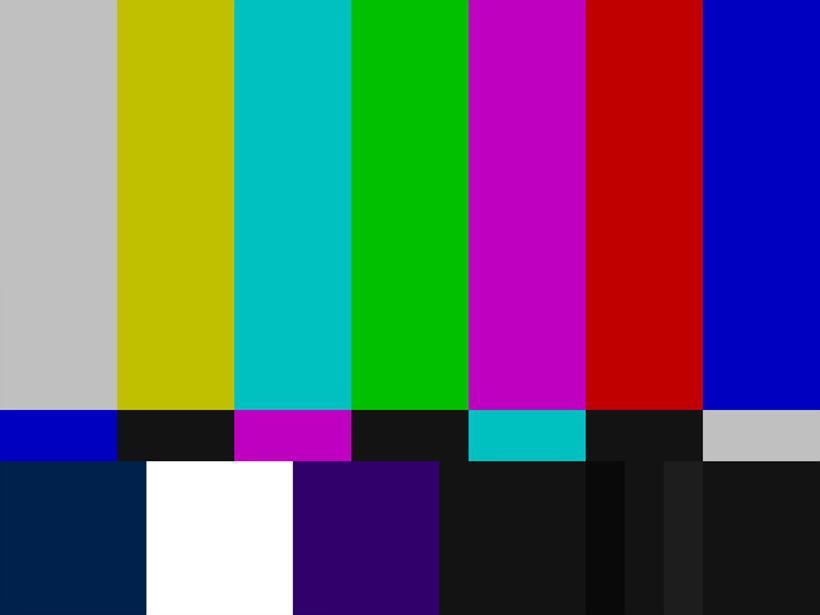
The hosting of the Olympics and World Cup games has been an opportunity for all industries, including construction, tourism, conventions, services, and electronics, to grow.
The Japanese electronics industry tried to use the Tokyo Olympics as a stepping stone for a new leap forward. In particular, they saw it as an opportunity to promote their video-related technology through relay broadcasts that are broadcast all over the world. In the eyes of TV viewers, competing players are visible, but behind the scenes of global events such as the Olympics, there is also a fierce battle to secure the electronics industry's market.
The weapon that the electronics industry has been honing with this Olympics is the ultra-high-definition 8K video system. In a situation where 4K UHD resolution broadcasting has not yet been fully established worldwide, 8K video with 4 times the picture quality may be seen as over-spec. However, in view of the technological development trend so far, ultra-high-definition video systems will be widely distributed in the near future.

The human senses respond well to higher quality and are immersed in them. Therefore, our view is also difficult to return to a lower image quality when looking at a better image quality. The larger the screen and the higher the quality, the higher the sense of presence and reality. Presence means that you appear to be in the place, and reality is the feeling that the place unfolds as if it were real in front of your eyes. Ultra-high resolution is the pinnacle of efforts toward realistic representation since the Paleolithic cave paintings.
From Analog to Digital: The Evolution of Display Resolution

Resolution, the most important factor in video quality, has seen dramatic progress over the past two decades. Twenty years ago, when converting analog video to digital, the standard resolution was 480 pixels in the vertical direction. Since there were phrases such as ‘360 horizontal resolution high-definition video’ in the advertisements for video home appliances, the resolution of 480 lines was a clear development. In addition, the advantages of digital video were of great value because there was no loss of image quality or noise even when copied or edited several times.
As usual during the transition period, the technical standards for converting analog video to digital have also appeared and disappeared according to business organizations. Public digital broadcasting was first launched by the British BBC in 1998, and at the same time in major cities in the United States. In Korea, 4 channels of digital broadcasting started in 2001, and analog and digital parallel broadcasting was carried out for quite a long time for the owners of existing analogue broadcasting contents and CRT TVs, and then switched to full digital broadcasting in 2013.
The transition from analog to digital broadcasting provided viewers with a completely different visual experience and an opportunity to communicate. The aspect ratio of 4:3, which was close to a square, has also been increased to a horizontally long 16:9 ratio, and the unit for dividing resolution has also been changed from the concept of an analog ‘line’ to a pixel. The existing 480-pixel video was taken as the standard definition, 720p, which was increased from that, was called “High Definition,” and the vertical 1080-pixel video was called “Full-HD” in the sense that it was the highest resolution of HD. The high-resolution video was much more detailed and colorful, making the screen look alive.
More Pixels on Display: Better Resolution

From the time of fully digital broadcasting, Korean broadcasting stations and the government have already begun to experiment with ultra-high-definition (UHD) broadcasting systems that go beyond HD images. 4K UHD is a high-definition standard with a vertical 2160p resolution, which is four times larger than Full-HD in terms of area. Around 2014, the purpose was to respond to UHD broadcasting tests in advanced countries such as the United States, Europe, and Japan, but also to preoccupy the future high-definition video market. As a result, in July 2017, Korea started the world's first terrestrial UHD broadcasting. Ultra-high-definition digital broadcasting is not just about getting better picture quality.
Let's take a look at the standard (TTAK.KO-07.0127) established by the Korea Information and Communication Technology Association (TTAK) according to the domestic situation based on the US broadcasting standard ATSC 3.0. In addition to ultra-high-definition UHD picture quality, four factors such as high brightness/high contrast ratio (HDR), wide color gamut (WCG), and high frame rate (HFR) are the technical standards, and it includes immersive stereophonic sound and interactive service (VOD). Currently, half of TVs sold in the global market are UHD resolution. In particular, sales of high-definition TVs increased sharply at the end of 2020 despite the COVID-19 pandemic. It became difficult to get out of the house, so there was a tendency to have a big TV in the house. As a result, 4K TVs have exceeded 500 million units worldwide and are no longer expensive. In just five years, our vision has adapted to 4x the resolution from FHD.
Bringing Life to Images: Color Gamut
In addition to resolution, color realization also plays an important role in determining high quality. If the detailed resolution realizes the image realistically, a wide range of colors gives life. Therefore, standards for ultra-high-resolution picture quality include not only resolution but also color standards called color gamut. The term 'gamut', meaning the whole range, was originally used to refer to the whole scale that can be produced by a human voice or instrument in music. The term color gamut thus refers to the entire color gamut that image processing equipment or display devices can produce. Just as the sound range is based on audible frequencies, so the color gamut is naturally based on human vision.

CIE 1931 has been commonly used for color space graphs expressing the range of colors that humans can distinguish. This is a color space standard established in 1931 by the International Commission on Illumination (CIE). The color function was mathematically formulated in each direction of XYZ to match the color-sensitive three-color (RGB) cone cell structure in the human visual system. The CIE 1931(B) color space graph commonly encountered in the display field is a graph that is converted into two dimensions of brightness and color for realization on a flat surface.
In this color space graph, the wavelength of visible light monochromatic light is expressed in nanometers (nm), so this is also called a color distribution diagram. When discussing the quality of video-related devices, such as cameras, converters, monitors, lighting, printers, etc., always use this color distribution chart as a reference. It is a standard established 90 years ago when there was no color TV, but no device on the planet can realize the entire color gamut. This color gamut is only used as the most ideal standard.
The fortunate development is the process of efforts to expand the color range that can be implemented based on this color gamut. Until the transition from black-and-white TV to color TV around 1980, life-like color images were only available in movie theaters. Even after color broadcasting started nationwide, the color of the movie and that of the broadcast looked slightly different, because the color gamut standards of the broadcast and the movie were different. Color movies, which began in 1915, were developed befitting the properties of the film and the light source characteristics of the projector.

When color broadcasting first began in the United States in 1954, NTSC color gamut standards were borrowed from films. However, due to the technical limitations of electromagnetic tape and CRT TV, analog broadcasting ended without meeting all standards. The HDTV standard (ITU.RBT.709) established in 1999 while preparing for high-definition digital broadcasting had a range of about sRGB, which was much smaller than the NTSC color gamut in the past.
sRGB, established in 1990, represents a small range that can satisfy even a low-end monitor, and the area of green color is reduced by about 20% compared to NTSC. Although it was a decision that focused on the possibility of actual implementation rather than the ideal standard, it was a return to the past. Fortunately, this conservative decision did not last long. The color gamut standard for ultra-high-definition UHD TV (ITU.RBT.2020) enacted in 2012 covers more than twice the range of the HDTV standard. Not only does it extend the color gamut, but it also includes the bit depth to realize color up to 12 bits. In the HDTV standard, the colors that can be represented with the three RGB primary colors in the 8-bit depth were 24 bits, that is, 16.8 million colors, whereas the 12-bit color based on the UHD can theoretically represent 68.7 billion colors. It is a standard that far exceeds the number of colors that the human eye can distinguish.
Color Display Technology that Transcends Human Limitations
The color gamut extended to more than 10 bits is called WCG (Wide Color Gamut), which is used as a standard for representing high dynamic range (HDR). The NTSC range, which was the ideal color gamut in the days of analog TV, or the sRGB gamut of HDTV, was originally a standard for CRT TVs. A CRT TV displays an image by stimulating the fluorescent material coated on the front glass of a cathode ray tube (CRT) with an electron gun on the back of the TV. It has dominated the world of video for over a hundred years, but now it is difficult to find.

The legendary Nam June Paik's video art tower, stood like a monument in the center of the National Museum of Modern and Contemporary Art, was withdrawn because the CRT could no longer be repaired or replaced. The video art that Nam June Paik introduced by renovating a CRT TV as a new canvas has ended in just 50 years. It is ironic that the main reason is the change in display technology. Of course, video artists are known for their video art, but the unique formative beauty created by the flickering and shaking screens unique to CRT has now disappeared.
As the year 2000 passed, many filmmakers were anxious about losing the unique formative beauty of film when digital films were introduced. However, even though celluloid film itself exudes an artistic feel, the film industry had changed in perception as a vicious industry that deals with and emits pollutants. No one supports now that making a film on film is a true art. There were many experts who raised their voices that the visual beauty of film movies could only be reproduced with 4K resolution. Ultra-high-definition digital imaging technology has come to reproduce almost all the advantages of film images in the past.

Now, even further than that, HDR video and high frame rate video have become popular. From the filming stage of the video to the display images placed in front of the viewer through post-production, vivid images are created. The display device was the last part where image quality was degraded the most, and this is being overcome with up-to-date technology.
We're nearing a future where true color accuracy is no longer an idealistic hope but a reality. With Virtual Reality (VR) videos currently epitomizing the power of color representation, more advanced display devices outperforming reality in the future will continue to add depth to the popular adage "A picture is worth a thousand words".

